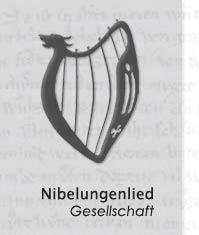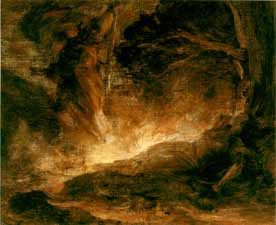|
The
Nibelungenlied
and Worms
from Ulrike Schäfer
|
.... |
The Valkyrie, J. T. Fantin-Latour, 1877 ..
|
The Poet Includes Legends and Historical Facts in his Work
Lots of research has been done on the origin of the Nibelungenlied, but nobody has succeeded so far to find the patterns the author used to construct his extremely homogeneous work, which consists of 378 cantos (aventiuren).
On the one hand he employed several motifs from legends and myths, which have partly existed long before, for instance, the dragon fight or the Cloak of invisibility. On the other hand there had already been epics which the author knew and which he might have referred to. One example is the much older Waltharilied from 950. It tells the story of Walter of Aquitaine fighting against king Gunther and Hagen from Worms. The Thidrek Saga, written around 1250, also includes some episodes that remind us of the Nibelungenlied. The Edda, an anthology of epics which also contains references to the Nibelungenlied, was probably written at the same time and handed down by oral tradition even earlier.
Richard Wagner's Ring tetralogy is mainly based on Norse tradition. At least, Worms is mentioned in none of his operas, and sticking to a certain place or time certainly was a nuisance to him.
But not to the author of the Nibelungenlied. Quite the reverse, he didn't give priority to mythological aspects. (The fight with the dragon and the capture of the Treasure are no more than a look back. Brunhild is not a Valkyrie sleeping in a fire circle, but a foreign queen. Only the girdle, the Cloak of Invisibility and the Treasure which is replenishes by itself are common wondrous elements to the two sagas.) Instead, the poet describes in great detail the places in which the story is set, and he provides for noted historic personalities in his work: Etzel is the same person as Attila, Dietrich von Bern is Theodoric the Great.
When inventing Brunhild, he certainly thought of Brunechildis, queen of the Merovingians. It can be proved that she was in Worms in the 6th century and she might have had the Cathedral built. Gunther may be associated with the Burgundian army commander Gundahar, who lived by the Rhine with his tribe in the middle of the 5th century. Defeated by Aetius, he moved to the region of Lake Geneva. These persons did not live at the same time, however. Did the author take in famous names inorder to add some glamour to his story? Or didn't historic processes not matter to him?
Some points in the Nibelungenlied remind us of the times of the migration of the peoples when Europe was undergoing radical changes. It is especially the decline of the Burgundians, who are called Nibelungs in the second part of the epic, which is often interpreted as the Battle of the Huns in the Catalaunian Plains.
But the time of the Merovingians is also often reflected in some of the episodes of the work. The quarrel of the queens and the betrayal of the brother are subjects which appear again and again in the History of the Franks by Saint Gregory of Tours. We can also still feel the influence by the Carolingians, who followed the Merovingians in the Frankish kingdom. At least technically the epic falls back upon the Chansons de geste, the 12th century epic poems that portrays Charlemagne's time, such as the Chanson du Roland. But we must consider that the poet, who didn't disclose his identity, embedded the story about Siegfried's death and Kriemhild's revenge in the courtly world of the 12th and 13th centuries, and he succeeded in connecting the "stories old" with the historical facts of that time.
Introduction
|


